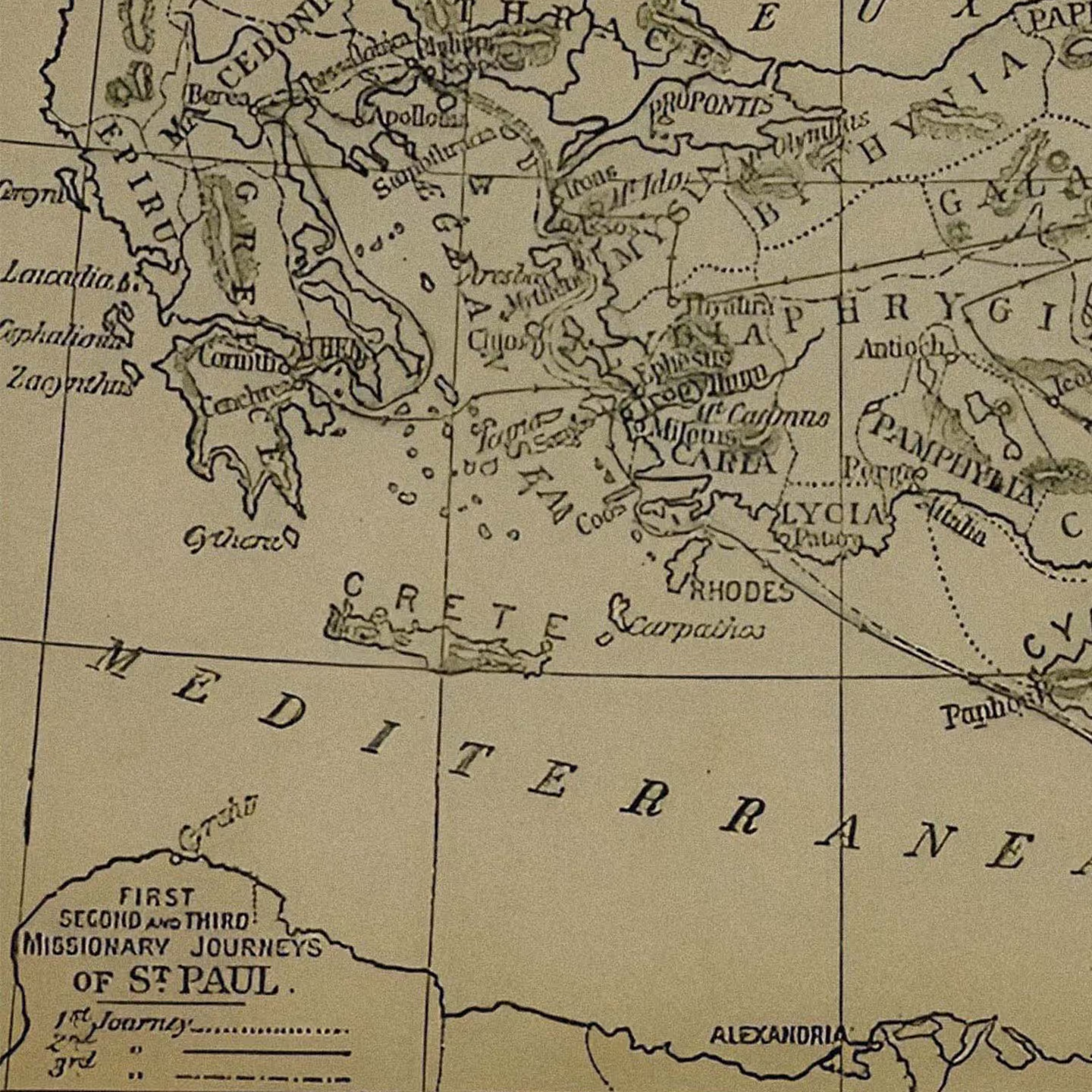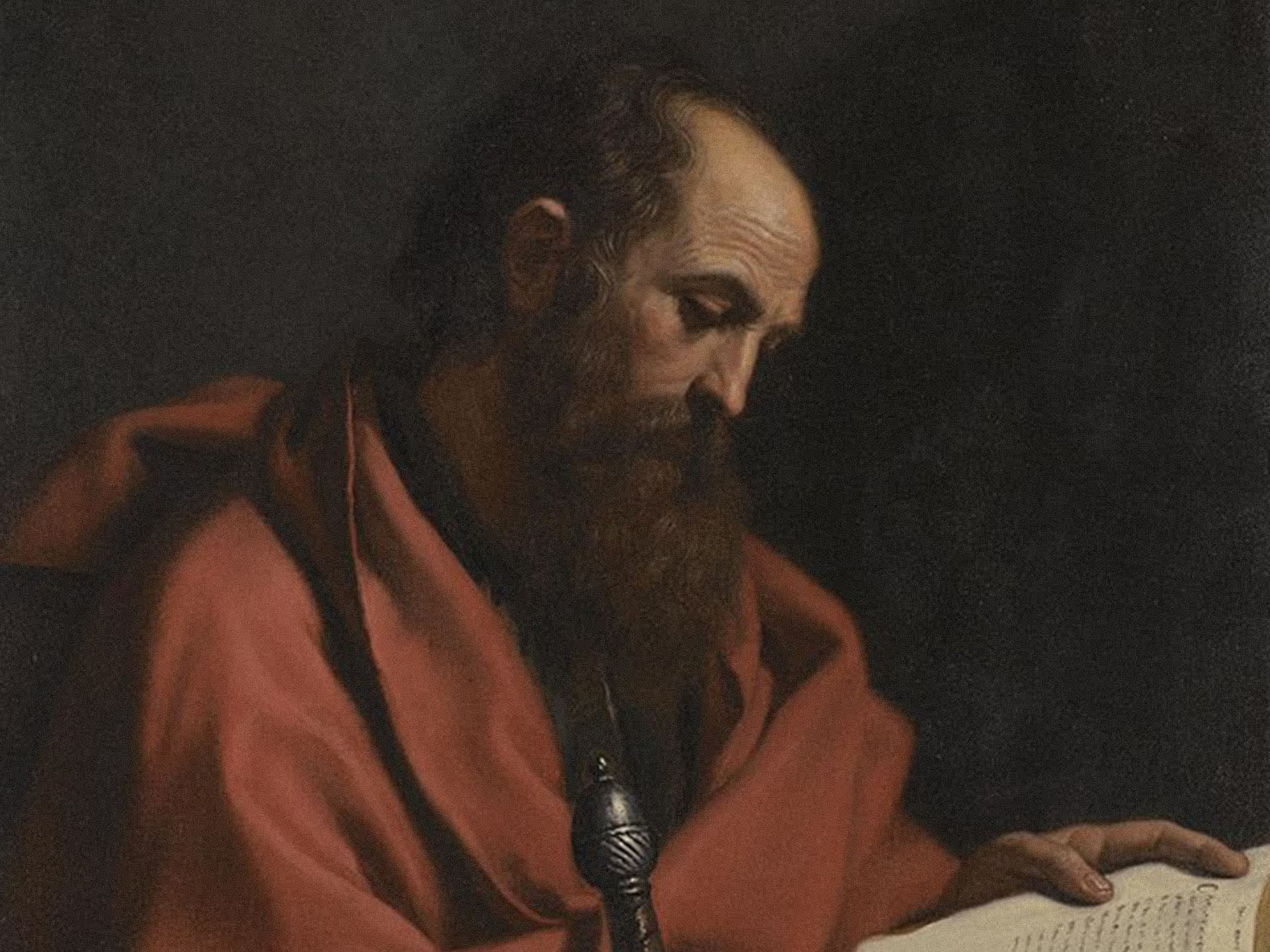Conversion
After the Ascension of Christ and the descent of the Holy Spirit upon his Apostles at Pentecost, the Jerusalem church came under persecution. The first martyr of the church, a deacon named Stephen, so enraged the High Priest and his council with his speech (Acts 7:1–53) that they dragged him outside the city and stoned him to death. Attending the stoning was a zealous student of Gamaliel, a man named Saul of Tarsus. Saul was well regarded as a model Pharisee.
While Saul’s whereabouts during the ministry of Jesus or his Crucifixion aren’t known, he was likely raised as a Pharisee and trained in the most highly regarded tradition, for which Gamaliel was renowned. In any case, immediately after Stephen’s martyrdom Paul became known for persecuting the church, imprisoning Christians, and “ravaging churches.” But during a journey to Damascus, Saul was blinded and addressed by the risen Christ.
And falling to the ground, he heard a voice saying to him, “Saul, Saul, why are you persecuting me?” And he said, “Who are you, Lord?” And he said, “I am Jesus, whom you are persecuting. (Acts 9:4–5)
In Damascus Saul was healed by a Christian named Ananias who told him
“Brother Saul, the Lord Jesus who appeared to you on the road by which you came has sent me so that you may regain your sight and be filled with the Holy Spirit.” (Acts 9:17)
Saul repented, believed, and became a follower of the Christ whose followers he had persecuted zealously.
Missionary Journeys
Following his conversion, Paul traveled to Arabia for three years before returning to Damascus and then to Jerusalem where he had some difficulty joining the disciples until Barnabas took up his case.
Now embraced by the church, Paul embarked on his first of three missionary journeys to carry the good news of Christ beyond the Jerusalem church. At first, Paul focused his efforts on reaching existing synagogues in large cities, attempting to convert the Jews to faith in Christ. However, as the synagogues grew less receptive and, in fact, antagonistic, Paul turned his attention to establishing independent churches. He became a missionary to the Gentiles. In ministering to Jews and Gentiles both, he became one of the church’s great apologists, debating Greek philosophers and church doctrine alike with deep textual knowledge and cultural fluency.
He planted churches throughout the Mediterranean and wrote thirteen letters that are included in the canonical scriptures. He was likely martyred in Rome during the reign of Nero.

Legacy
Paul’s missionary method has been the biblical basis for the church’s missions since the first century. It is a method best expressed in his own words, and quoting Isaiah:
For I will not venture to speak of anything except what Christ has accomplished through me to bring the Gentiles to obedience—by word and deed, by the power of signs and wonders, by the power of the Spirit of God—so that from Jerusalem and all the way around to Illyricum I have fulfilled the ministry of the gospel of Christ; and thus I make it my ambition to preach the gospel, not where Christ has already been named, lest I build on someone else’s foundation, but as it is written, “Those who have never been told of him will see, and those who have never heard will understand.” (Romans 15:18–21)
Paul was intent on reaching the unreached with the gospel. To accomplish this he relied on his own skill as a tradesman, a tent maker, to provide for himself. In addition, his aim was not merely to make converts, but to plant elder-led churches. And his ambitions for these churches were not meager. Within a few short years, he urged them to support other missionaries and other churches. For Paul the Church was both the means and the ends of his mission.
In ministering to Jews and Gentiles both, he became one of the church’s great apologists, debating Greek philosophers and church doctrine alike with deep textual knowledge and cultural fluency.
Additional Resources
- Read Paul's Letter to the Romans
- Learn more about The Life and Theology of Paul
